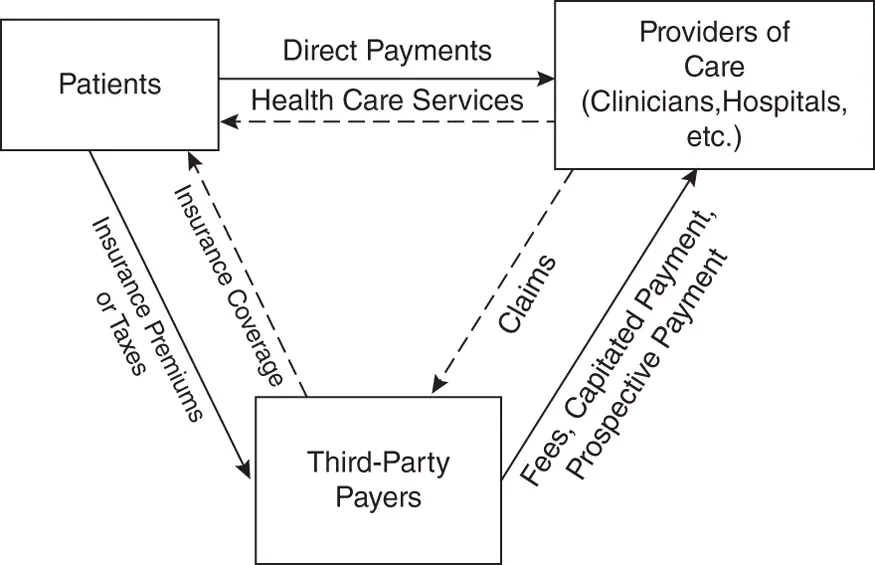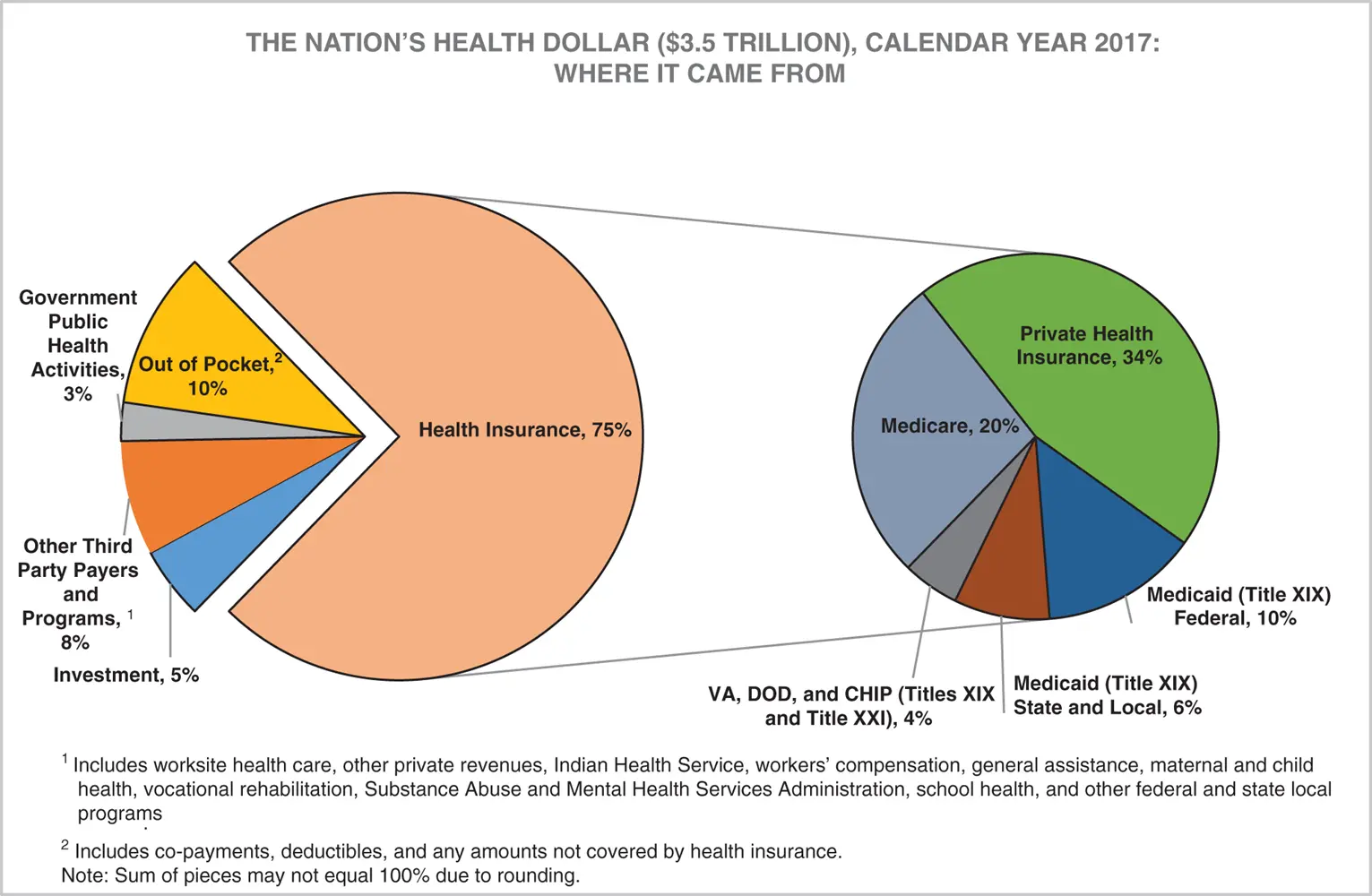Table 2.2 Top 10 Actual Causes of Death in the United States in 2000
| 1. Tobacco |
4. Alcohol |
7. Motor vehicle crashes |
9. Sexual behaviors |
| 2. Poor diet |
5. Microbial agents |
8. Firearms |
10. Illicit drug use |
| 3. Physical inactivity |
6. Toxic agents |
|
|
Source: CDC. “FastStats ‐ Deaths and Mortality.” Centers for Disease Control and Prevention , Centers for Disease Control and Prevention, 21 June 2019, www.cdc.gov/nchs/fastats/deaths.htm.
Quality of health care improved overall from 2000 through 2016–2017, but the pace of improvement varied by priority, which are (AHRQ, 2019):
Person‐Centered Care:Almost 70% of measures were improving.
Patient Safety:More than 60% of measures were improving.
Healthy Living:Almost 60% of measures were improving.
Effective Treatment:Almost half of measures were improving.
Care Coordination:One‐third of measures were improving.
Care Affordability:No care affordability measures changed.
Overalls, as one ages, more health care services are utilized; women use health care services more frequently than men; and whites have greater health care access, and therefore higher utilization rates, than do patients of color as reported by the National Healthcare Disparities Report (NHDR), 2018; (AHRQ, 2019). Both financial and nonfinancial barriers to care delivery result in lack of attention to health care disparities and factors contributing to the underlying causes of death, which affects health outcomes. In‐depth information on national health care disparities is reported in the annual National Health Disparities Report (AHRQ, 2019).
For example, disparities in infant morbidity and mortality, cardiovascular and pulmonary disease, diabetes, communicable disease, cancer, and disease prevention (i.e., immunization and health screening) are more likely to be experienced by people disadvantaged by poverty, age, skin color, or ability to speak English. Such differences are further aggravated by miscommunication and misunderstanding, stereotyping, discrimination, and prejudice between patients and providers. Lifestyle behaviors that contribute to illness are higher among vulnerable groups. Because of their financial difficulties and other difficulties in accessing the health care system, vulnerable people often postpone health care. They are more likely to use the acute care system when their illness symptoms are advanced. Use of emergency departments and other acute care facilities for treatment is the most expensive way to obtain health care. In countries with a national health care system, health disparities also exist, but virtually everyone in those countries, regardless of socioeconomic background, is assured of equal access to quality health care. Health care is associated with 10–20% of the modifiable contributors to healthy patient outcomes (Magnan, 2017). The other 80–90% are dependent on health behaviors (e.g., tobacco use, diet/exercise, and alcohol use), social/economic factors (e.g., education, income, and employment), and the individual's physical environment (e.g., air quality, housing, and transit) (Magnan, 2017). These “social determinants” are so important when it comes to health that they have been called the “causes of causes.”
Social determinants of health(SDOH) include access to health care, culture, language, education/literacy, access to transportation, crime rates, and safe housing. Research studies indicate that SDOH do matter and can have a significant impact on a population's health (CDC, 2018).
In the United States, health insurance has been generally employment‐based, so long as it is affordable for the employer to offer this health care coverage to employees. The higher one's income in this country, the greater the likelihood of having health insurance coverage. The opposite is true for those with low incomes, especially those with poverty‐level incomes. Patients who are at poverty levels often cannot afford insurance premiums nor can they afford, in the majority of instances, out‐of‐pocket health care costs. Since the inception of private health insurance in the late 1920s following the development of hospitals as the center of health care and subsequent rising health care costs (Starr, 1983), private health insurance from third‐party payers such as insurance companies has been generally voluntarily offered as a benefit to employees and sometimes their families. Patients may make payments to providers of health care and third‐party payers. Providers of health care deliver service to patients and bill third‐party payers. Third‐party payers may make payments to providers as direct payment fees for individuals, capitated payment for services for a group of patients, or as prospective payments for future patients. Health insurance distributes health care funds from the healthy to the sick ( Figure 2.4).
 FIGURE 2.4 Economic relationships in the health care delivery system.
FIGURE 2.4 Economic relationships in the health care delivery system.
Source: Adapted from “What Can Americans Learn from Europeans?” by U. E. Reinhardt, 1989, Health Care Financing Review [Supplement], pp. 97–103.
Medicare and Other Health Care Costs
One reason proposed for the steady incline in health care costs is that the elderly have virtually UHC coverage through Medicare. This UHC coverage indicates that the United States will likely experience very rapid growth in overall health expenditures in the coming years, as the population continues to age. Other sources of health care funding, and where it went, are shown in Figures 2.5and 2.6.
 FIGURE 2.5 The nation's health dollar, calendar year 2017 where it came from. Centers for Medicaid and Medicare (CMS), Office of the Actuary, National Health Statistics
FIGURE 2.5 The nation's health dollar, calendar year 2017 where it came from. Centers for Medicaid and Medicare (CMS), Office of the Actuary, National Health Statistics
Source: Centres for Medicaid and Medicare (CMS), Office of the Actuary, National Health Statistics Group.
 FIGURE 2.6 The nation's health dollar, calendar year 2017, where it went to.
FIGURE 2.6 The nation's health dollar, calendar year 2017, where it went to.
Source: Centers for Medicare and Medicaid Services, Office of the Actuary, National Health Statistics Group.
In the United States, health care insurance is one of the most significant factors in facilitating access to health care services. Recently, the number of people covered by insurance as well as the breadth and depth of health insurance coverage has decreased. According to data from the Kaiser Family Foundation‐Health Research and Educational Trust Annual Employer Survey (2018), the average yearly costs for employer‐sponsored health insurance in 2018 are $6,896 for single coverage and $19,616 for family coverage. The average single premium increased by 3% and the average family premium increased by 5% in the last year. Workers' wages increased by 2.6% and inflation increased by 2.5% over the past year. The average insurance premium for family coverage has increased by 20% since 2013 and by 55% since 2008.
Читать дальше

 FIGURE 2.4 Economic relationships in the health care delivery system.
FIGURE 2.4 Economic relationships in the health care delivery system. FIGURE 2.5 The nation's health dollar, calendar year 2017 where it came from. Centers for Medicaid and Medicare (CMS), Office of the Actuary, National Health Statistics
FIGURE 2.5 The nation's health dollar, calendar year 2017 where it came from. Centers for Medicaid and Medicare (CMS), Office of the Actuary, National Health Statistics FIGURE 2.6 The nation's health dollar, calendar year 2017, where it went to.
FIGURE 2.6 The nation's health dollar, calendar year 2017, where it went to.










